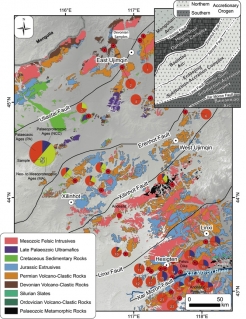 HKU Department of Earth Science
HKU Department of Earth Science
Seminar
Subduction and Closure of the Palaeo-Asian Ocean along the Solonker Suture Zone: Constraints from an Integrated Sedimentary Provenance Analysis
-
Date
March 5,2015
-
Time
10:00 AM
-
Venue
JL104
-
Speaker
Mr. Paul R. Eizenhöfer Department of Earth Sciences, HKU
The Central Asian Orogenic Belt formed by accretion subsequent to the contraction of the Palaeo-Asian Ocean that ultimately disappeared along the Solonker Suture Zone in East Asia. Since typical regional collisional features are absent, the tectonic evolution of the suture remains speculative. Integrated sedimentary provenance analyses across the accretionary collision zone between the Mongolian Arcs and the North China Craton place new constraints on the events that led to final suturing. An investigation on the geochronological and geochemical variability in Permian strata along a southeast-northwest transect, provided with a robust statistical framework, revealed distinct differences across the suture. A complex Permian palaeo-geographic setting is recognised, involving a variety of arc basins, which received sediments dependent on the contemporary arc geometry. Early stages of ocean closure likely resembled a Pacific-type scenario, including Japan-type back-arc basin opening, whereas late stages were similar to the archipelago-type setting of present-day Southeast Asia.


